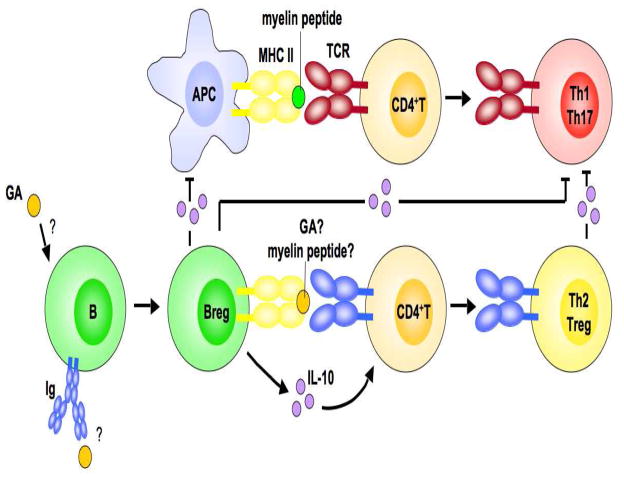Fig. 1.
Proposed role for B cells in the protective effects of GA in CNS autoimmunity. Based on the studies of Kala et al. (2010), a model is proposed for the role of IL-10-producing Bregs in the mechanism of action of GA in EAE and MS. GA induces a regulatory phenotype in B cells that is likely independent of their specificity for GA. These IL-10-producing Bregs might suppress autoimmunity in multiple ways, by (1) inhibiting the pathogenic activity of myelin antigen-specific Th1 and Th17 cells, (2) promoting the generation of Th2 cells (and possibly Foxp3-expressing Tregs), which, in turn, suppress pathogenic Th1 and Th17 cells through “bystander suppression,” and (3) suppressing the capacity of APCs to induce pathogenic T cells. It is unclear whether these proposed mechanisms are restricted to the periphery or occur in the CNS as well. Abbreviations: Ig, immunoglobulin; MHC II, MHC class II; TCR, T cell receptor.

